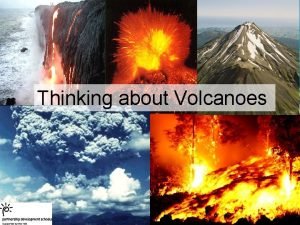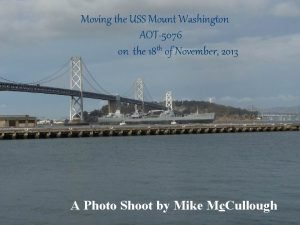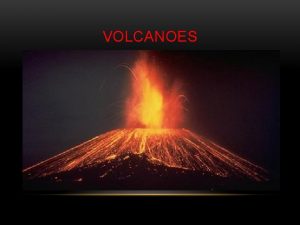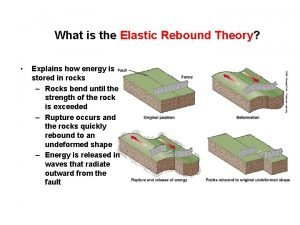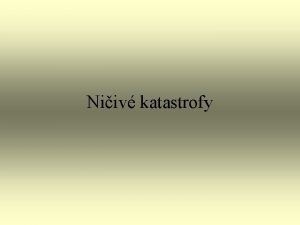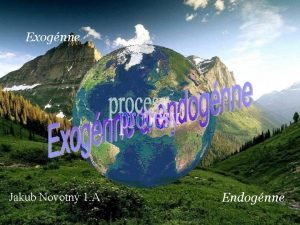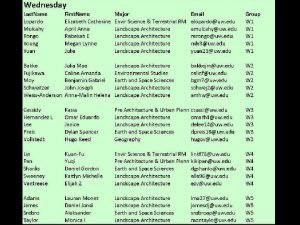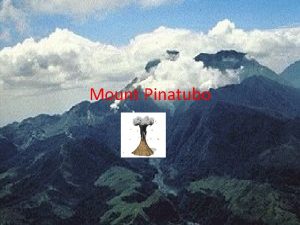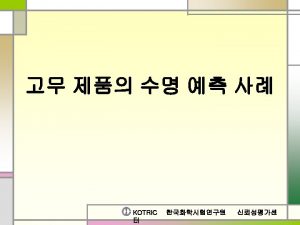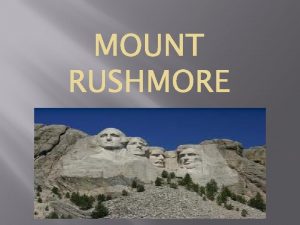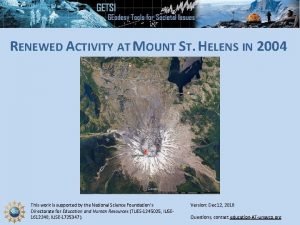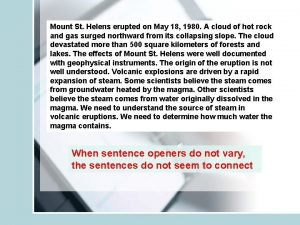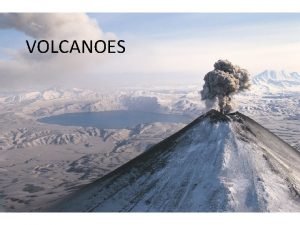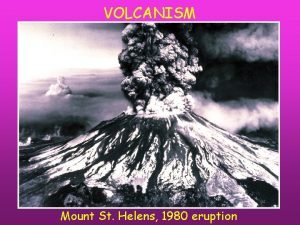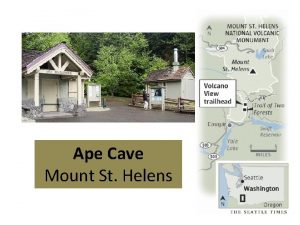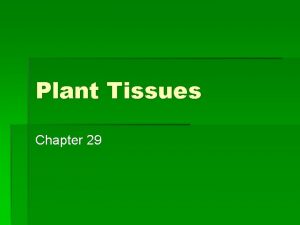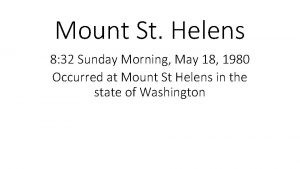Welcome to Mount St Helens Washington Science Standard













- Slides: 13

Welcome to Mount St. Helens, Washington Science Standard 5 Earth’s Dynamic Systems Interactions Throughout Earth’s Systems 5. The surface of Earth changes constantly. Some of these changes happen slowly and are difficult to detect on a daily basis. Other changes happen quickly and result from events (i. e. , major storms and volcanoes). © Jessica Best

“bulge” Stop #1 May 17, 1980 § Here we see a "bulge" that developed on the north side of Mount St. Helens as magma pushed up within the peak. § The bulge has been growing at a rate of up to five feet per day. © Jessica Best

Stop #1 May 17, 1980 Magma = molten rock that is formed within the Earth’s crust © Jessica Best

Stop #1 May 17, 1980 § The steep, symmetrical cone is typical of a stratovolcano. What type of Volcano is Mount St. Helens? © Jessica Best

Stratovolcano = a tall, conical volcano with many layers (strata) of hardened lava and volcanic ash Stop #1 May 17, 1980 § The steep, symmetrical cone is typical of a stratovolcano. © Jessica Best

Stop #2 May 18, 1980 § At 8: 32 a. m. this morning a magnitude 5. 1 earthquake shook Mount St. Helens. § The once bulge and surrounding area slid away in a gigantic rockslide and debris avalanche, releasing pressure. § For more than nine hours, a cloud of ash erupted. © Jessica Best § Take Cover!!

Stop #3 May 21, 1980 § The massive ash cloud grew to 80, 000 feet in 15 minutes and reached the east coast in 3 days. © Jessica Best

Stop #4 August 7, 1980 § During the eruption, at least 17 separate pyroclastic flows descended the slopes of Mount St. Helens. § Pyroclastic flows typically move at speeds of over 60 miles per hour and reach temperatures of over 800°F. © Jessica Best

Stop #4 August 7, 1980 Pyroclastic Flow = fast-moving currents of hot gas and rock which travel away from the volcano. Pyroclastic Flow © Jessica Best

Stop #5 October 17, 1980 Where did this pile of pumice rocks come from? © Jessica Best § Here we see a pile of pumice rocks on the valley floor. ð These igneous rocks are located at the toe of a pyroclastic flow. Cooled pumice is the primary component of the flows.

Igneous Rocks = formed when lava cooled quickly above ground. You can see where little pockets of air had been. This rock is so light, that many pumice rocks will actually float in water. © Jessica Best Stop #5 October 17, 1980

Lateral Blast = A fairly rare explosion of hot mixture of rock debris, ash, and gases that moves at high speeds out the side of the vent (laterally) rather than up from the vent (vertically). Stop #6 October 24, 1980 § Slopes of Smith Creek valley, east of Mount St. Helens, where a forest once stood. § Trees blown down by the May 18, 1980 lateral blast. § Enough timber to build 150, 000 homes. © Jessica Best

References • http: //library. thinkquest. org/17457 /volcanoes/index. php http: //www. kidscosmos. org/kidstuff/kids-volcanoes-types. html • • http: //vulcan. wr. usgs. gov/Volcano es/MSH/Nat. Monument/framewor es/MSH/Slide. Set/ljt_slideset. html k. html • • • http: //www. enchantedlearning. co http: //www. tramline. com/tours/sc m/subjects/volcano/types/ i/volcano/_tourlaunch 2. htm • http: //www. kidscosmos. org/kidstuff/kids-volcanoes. html • • http: //www. youtube. com/watch? v =fmsxmb. VYMHo&feature=related • • http: //www. youtube. com/watch? v =v. Ki 0 Vb 65 i. BI&feature=related © Jessica Best
 Mount st helens plates involved
Mount st helens plates involved Mount washington pediatric hospital
Mount washington pediatric hospital Uss mount washington
Uss mount washington Before and after mt st helens eruption
Before and after mt st helens eruption Elastic rebound
Elastic rebound St helens tsunami
St helens tsunami Saint helens tsunami
Saint helens tsunami Hilton st helens
Hilton st helens Saint helens tsunami
Saint helens tsunami Slope angle of mt st helens
Slope angle of mt st helens Mount st joseph reading science
Mount st joseph reading science What are your favorite subjects?
What are your favorite subjects? Wa.portal.cambiumast
Wa.portal.cambiumast Wise men three clever are we
Wise men three clever are we
